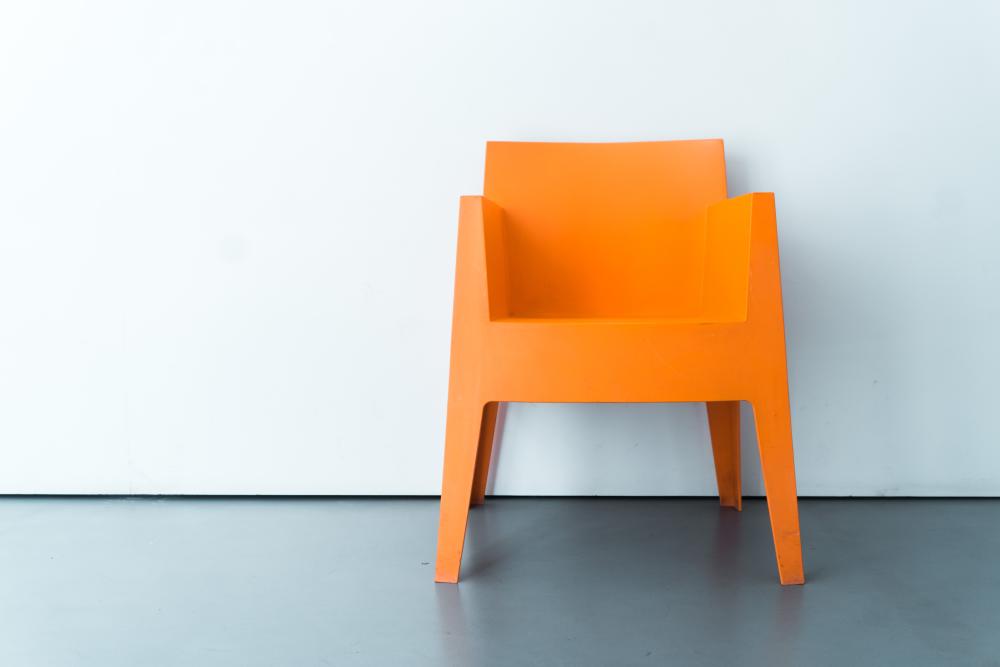
In the beginning were the Red Door Stories. These were a series of fictions my dad would compose for me and my siblings. The Red Door Stories were a portal we would open to some fantastic, exotic worlds. To be honest, I don’t remember his stories in detail, but I can recall how they felt: We loved listening to these small and intimate tales, told just for us, close with our dad.
I’ve carried on this Red Door tradition with the Orange Chair Stories. My kids and I have been weaving these narratives at bedtime for years. They began as a way to pass time on road trips—no books to read, no screen-time required—but they’ve evolved into something bigger.
In our adventures, we’ve bushwhacked through jungles full of dinosaurs, danced in micro-gravity on the moon, and flown through the forest as a sparrow.
Every Orange Chair Story begins with the children cooling their heels at the home of their uncle—an unnamed fellow who never shows up and is strangely okay leaving his progeny to run amok amongst his house and belongings. For each tale, a fairly normative challenge presents itself: a broken dishwasher, no good snacks, an elusive lizard. Upstairs in the secret lab (every mysterious uncle has one) is the Chair: Sit down and whoosh! you’re off. In our adventures, we’ve bushwhacked through jungles full of dinosaurs, danced in micro-gravity on the moon, and flown through the forest as a sparrow. The kids gather ideas or objects along the way to solve the original problem at hand: a sprocket to fix the dishwasher, the key to a pantry full of snacks, a love of lizards.
Why in the world am I—are we—doing this?
I want my kids to have the same Red Door feeling. But like every other parent, by the time bedtime rolls around, I’m not at my most creative. So, over these past few years, the kids and I have developed an approach that we can deliver even on the least energetic of evenings. Like the Red Door, the Orange Chair becomes the heroic infrastructure, our magic carpet to zip us through time and space in search of jeopardy we can share.
Creativity is a personal and professional pursuit. As an architect and experience designer, I spend much of my time crafting narratives that help explain a need, test a concept, or describe a future state. While I try not to bring work home, I do try my best to bring my home to work: In fact, I can draw a direct line between managing a boardroom and keeping the attention of a four- and seven-year-old. For both to go well, you need to...
Bring your listeners into the telling of the story and place them in control of crafting the details. To do this, really listen.
Share the work: Bring your listeners into the telling of the story and place them in control of crafting the details. To do this, really listen. Understand what their interests and dreams are and keep track of them so that they can be used live as the tale unfolds. Weave in these details not because they make the story more relevant, but because they make the story richer, extending far beyond what your own mind can produce. One way EPAM Continuum did this, on a project with the Massachusetts Department of Transportation, was to create a game that allowed Bostonians to imagine different transportation experiences. “Each time the game is played it creates an opportunity to consider system improvements with somebody else’s point of view, build empathy for the broad set of circumstances within which people ride the T, and create an inclusive atmosphere for new perspectives and ideas.”
Be familiar: Create a structure that is understandable and repeatable. Adults and children alike get nervous when they lose the thread or don’t know how long something is going to take. Both begin to fidget around the three-minute mark unless they have an idea of what’s coming next. Be predictable without being repetitive. Reference real events or struggles that are happening right now in their worlds and help them see themselves in the story. We’ve found that theatrical prototyping is a way to immerse any number of people in an environment, a story, over and over again.
Stay playful: Devise an experience that’s fun, novel, and exploratory. As my colleague Jen Ashman writes in her piece “3 forms of play that will help you with your work,” a playful mindset can break down bias and unlock imagination. Take risks. Find joy. Be funny. Storyteller Jay O’Callahan suggests people beginning their careers in storytelling test their material with a more forgiving crowd, their kids. I’m flipping the model and learning from work to try and be a better parent.
Over the past few years we’ve made dozens and dozens of Orange Chair stories—some are great, some are terrible. They’re not all winners, but each one is uniquely ours. While the boardrooms may get more polish, the kids sure get more passion. Ten minutes or two minutes, it’s about creating a memory, not a legacy. And at the end of the day folks, it’s time for bed.

